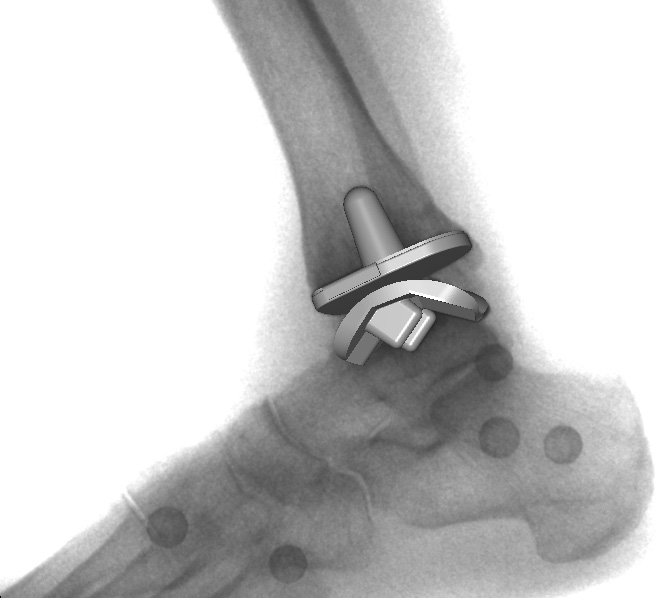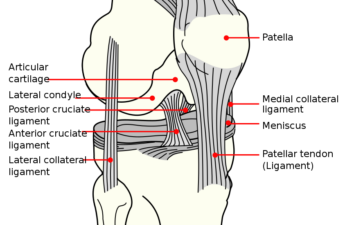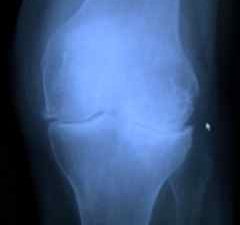
By Eric Heit, DPM
Virginia Mason Orthopedics and Sports Medicine
More than 30 years ago, Michael Diorio fell from a palm tree while trimming fronds at a San Diego apartment. The three-story fall crushed his left heel and fractured his right ankle. Over the last 20 years, he had seven surgeries on his feet. Nevertheless, the ankle remained the ankle pain persisted.
Three years ago, he and his wife of 37 years moved from Wisconsin to Everett to be closer to one of their two adult sons and, for Diorio, to start a new job as a truck driver for a Boeing parts supplier.
With his new job he got health insurance provided him access to Virginia Mason where he went to be evaluated by podiatrist in the Orthopedics and Sports Medicine department.
Following an evaluation, Diorio, now 56, was told he was a candidate for a relatively new procedure – total ankle arthroplasty, also known as total ankle replacement. After researching the approach and having all of his questions answered, he decided it was in his best interest.
Diorio subsequently had the three-hour outpatient surgery on his right ankle at Virginia Mason Hospital and Seattle Medical Center on Dec. 15 of last year and returned to work full time in late March.
In his job, Diorio typically spend four to six hours each weekday on his feet. “I used to limp and regularly experience pain,”he recalls. “Now I walk almost as well as I did before my injury and without any discomfort. I’m glad I was a candidate for total ankle replacement and have been very satisfied with the experience and outcome.”
The procedure and its benefits
Millions of people suffer from ankle pain. It can be debilitating to the point that they withdraw from activities instead of staying active. This is especially true for older Americans who have arthritis in an ankle that causes frequent pain.
Total ankle replacement is similar to hip and knee replacements – patients receive a new ankle joint made of precisely engineered metal and plastic parts that replace the old ankle joint.
Expected benefits from the surgery include:
- Improved ankle function
- Reduction or elimination of ankle pain
The surgery is typically performed without the need for an overnight hospital stay and patients usually go home the same day to begin recovery. Patients should expect a period of limited weight-bearing initially, followed by a gradual return to daily activity as their ankle heals. Most patients will have physical therapy after the procedure to help regain mobility.
Virginia Mason’s foot and ankle surgeons are trained in advanced reconstructive techniques and are ready to help patients get back on their feet. People who are not candidates for total ankle replacement may be offered other procedures to relieve ankle pain.
As Diorio has experienced, total ankle replacement can provide pain relief and make it easier for people to get around. But candidates need to weigh risks and benefits before making a final decision.
How total ankle replacement can help
Total ankle replacement relieves discomfort in the joint that older adults sometimes experience during weight-bearing activities. It might also ease occasional ankle pain that can occur when not moving the joint.
However, like every surgery, there are risks such as infection and wound healing problems, although this risk is low, occurring in less than 2 to 3 percent of cases.
The American Orthopaedic Foot & Ankle Society recommends people try non-surgical options for pain relief before speaking with their primary care physician about having total ankle replacement.
Nonsurgical remedies include such treatments as bracing, corticosteroid injections and changing to non-weight bearing or low-impact activities.
If non-surgical approaches do not provide relief, total ankle replacement might be appropriate.
Getting the green light
Your physician will consider a few things before recommending surgery, such as:
- Age
- Activity level
- Other potential medical complications
- Severity of arthritis in your ankle
- The potential for arthritis in other foot joints
In general, surgeons recommend total ankle replacement for people 55 or older. The thinking is that older adults will likely not stress the ankle as much as a younger patient, so we anticipate that the implant will last longer. Runners, or people who do other high-impact activities, are not good candidates for the surgery.
A person’s overall wellness before total ankle replacement is important. People should see their primary care physician before surgery to help ensure they are in optimal health.
If someone is thinking about total ankle replacement but they don’t think they may be a candidate, they should get a referral from their primary care provider to see and speak with a foot surgeon. This is important because even if someone isn’t a candidate for total ankle replacement, the specialist can discuss other treatment options that might help.
If you have health issues
Certain things can make total ankle replacement risky, such as:
- No ankle movement
- Poor ankle-bone quality
- Unstable ankle ligaments
- Significant ankle alignment problem
- Infection, especially in an ankle
If you have diabetes, your doctor will want to make sure you have good circulation and healthy blood-sugar levels before surgery. If your diabetes is not well-controlled, it increases the chance of complications, including infection.
Outcomes
According to the American Orthopaedic Foot & Ankle Society, there is a 90 to 95 percent chance that total ankle replacement will be successful and without complications.
Based on our experience at Virginia Mason, most people are doing well within about three months after surgery, and full recovery usually takes six months to a year.
 Eric Heit, DPM, is a board certified podiatrist with Virginia Mason Orthopedics and Sports Medicine. His specialties include podiatry, foot and ankle surgery, podiatric surgery and sports medicine. He practices at Virginia Mason Hospital and Seattle Medical Center. Dr. Heit is a Puget Sound area native and West Seattle resident.
Eric Heit, DPM, is a board certified podiatrist with Virginia Mason Orthopedics and Sports Medicine. His specialties include podiatry, foot and ankle surgery, podiatric surgery and sports medicine. He practices at Virginia Mason Hospital and Seattle Medical Center. Dr. Heit is a Puget Sound area native and West Seattle resident.


